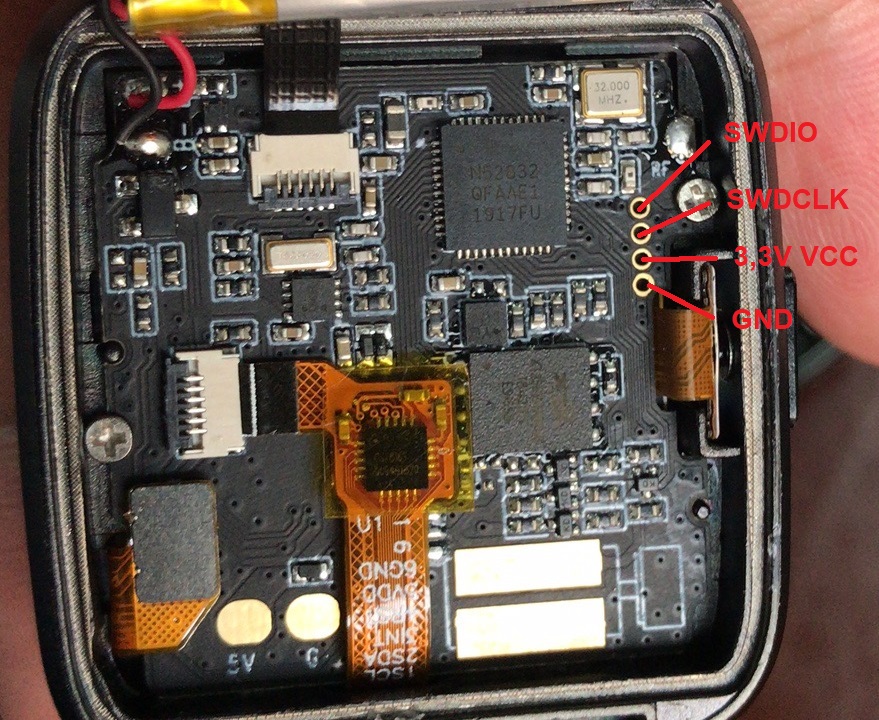Difference between revisions of "PineTime devkit wiring"
| Line 1: | Line 1: | ||
This article will help you get up to scratch about how to connect your PineTime to your hardware debugger and what to keep in mind. | This article will help you get up to scratch about how to connect your PineTime to your hardware debugger and what to keep in mind. | ||
The devkit comes with a set of wires you can use for connecting your programmer to the SWD pins. Most people use friction to make contact with the programming cable | The devkit comes with a set of wires you can use for connecting your programmer to the SWD pins. Most people use friction to make contact with the programming cable. Soldering the wires to the pinetime is not recommended, especially if you don't have a temperature-controlled iron and good confidence that you can do it - the thin PCB is fragile and easy to break. Current dead PineTime count due to such soldering gone wrong is '''3''' (update this number when suitable). | ||
If you have a soldering iron and you're competent with it, it is recommended that you remove the battery until you actually need it. Doing so avoids unnecessary charge cycles and strain on it. It can also potentially prevent issues with your watch not resetting properly. | |||
If you do not have a soldering iron, don't disconnect the battery. Don't bend the wires too much as they're thin, you won't be able to reconnect it. Keep in mind that keeping it connected during development will probably reduce the lifetime of the battery, it will also very likely backfeed power into your 3.3V pin - '''don't cause short circuits, don't leave the wire dangling!''' | |||
== SWD Pinout == | == SWD Pinout == | ||
Revision as of 13:12, 16 August 2020
This article will help you get up to scratch about how to connect your PineTime to your hardware debugger and what to keep in mind.
The devkit comes with a set of wires you can use for connecting your programmer to the SWD pins. Most people use friction to make contact with the programming cable. Soldering the wires to the pinetime is not recommended, especially if you don't have a temperature-controlled iron and good confidence that you can do it - the thin PCB is fragile and easy to break. Current dead PineTime count due to such soldering gone wrong is 3 (update this number when suitable).
If you have a soldering iron and you're competent with it, it is recommended that you remove the battery until you actually need it. Doing so avoids unnecessary charge cycles and strain on it. It can also potentially prevent issues with your watch not resetting properly.
If you do not have a soldering iron, don't disconnect the battery. Don't bend the wires too much as they're thin, you won't be able to reconnect it. Keep in mind that keeping it connected during development will probably reduce the lifetime of the battery, it will also very likely backfeed power into your 3.3V pin - don't cause short circuits, don't leave the wire dangling!
SWD Pinout
The devkits have exposed SWD pins for flashing and debugging.
The pinout is:
Raspberry Pi connection
// TODO:
